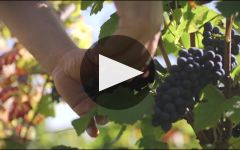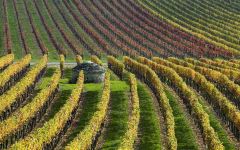Faiveley Corton Clos des Cortons Faiveley Grand Cru 2014
-
Wine
Spectator -
Wine
Enthusiast -
Robert
Parker -
Wine &
Spirits



Product Details
Your Rating
Somm Note
Winemaker Notes
Professional Ratings
-
Wine Spectator
This is pure, featuring cherry, berry, floral and spice aromas and flavors married to a vivid structure. Firms up nicely as the fruit and supporting matrix build to a long finish. Best from 2020 through 2033. 120 cases imported.
-
Wine Enthusiast
A flagship of the Faiveley range, this is a structured wine with great acidity and beautiful perfumes. The wine is dense, already balanced with the red fruits shining through the tannins. It will develop slowly and will not be ready to drink before 2023.
-
Robert Parker's Wine Advocate
The product of a dry spring and a rainy summer, the 2014 Corton Grand Cru Clos des Cortons Faiveley offers up an appealing bouquet of wild berries, dark chocolate, cedar, espresso roast and candied peel that's framed by a deft touch of creamy new oak. On the palate, the wine is full-bodied, with an ample, textural attack but a tight-knit, somewhat closed mid-palate that's structured around fine-grained but firm tannins. While the 2014 isn't as as broad-shouldered as the 2015, it's a powerful, structured wine that will demand some patience.
-
Wine & Spirits
Georges Faiveley won the right to include his family name in the name of this grand cru in 1937; it’s a 7.44-acre parcel within Le Rognet. Some of the vines today date back to 1936 and ’56, providing a complex 2014 with lasting floral intensity. The dense, raspberry-scented fruit is completely savory, with powerful tannins that lend it broad richness. Cellar this until it’s ten years old before you consider drinking it.
Other Vintages
2021-
James
Suckling -
Jasper
Morris -
Wine
Spectator
-
James
Suckling -
Wine
Spectator -
Robert
Parker
- Decanter
-
James
Suckling -
Wine
Spectator -
Robert
Parker
-
James
Suckling -
Jasper
Morris - Decanter
-
Robert
Parker
- Decanter
-
James
Suckling -
Wine
Spectator -
Jasper
Morris -
Robert
Parker
- Decanter
-
James
Suckling -
Robert
Parker
-
James
Suckling -
Wine
Spectator
-
Robert
Parker -
Wine
Spectator
-
Wine
Spectator -
Robert
Parker -
Wine
Enthusiast
-
Wine &
Spirits -
Wine
Spectator






Founded in 1825, Bourgognes Faiveley has been handed down from father to son for over 175 years. As the sixth generation to take the reins, François Faiveley manages, with equal amounts passion and competence, the largest family domaine in Burgundy. Methodically reconstructing vineyards fractured by French inheritance laws, Bourgognes Faiveley today owns more appellations in their entirety (monopoles) than any other domaine in Burgundy.
"Faiveley’s wines are... supremely clean and elegant: definitive examples of Pinot Noir... above all they have richness and breed, the thumbprint of a master winemaker."
-Clive Coates M.W.
Côte d’Or, A Celebration of the Great Wines of Burgundy
